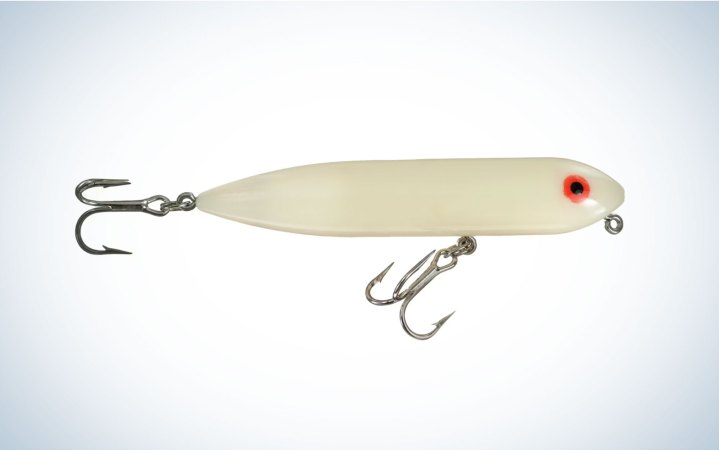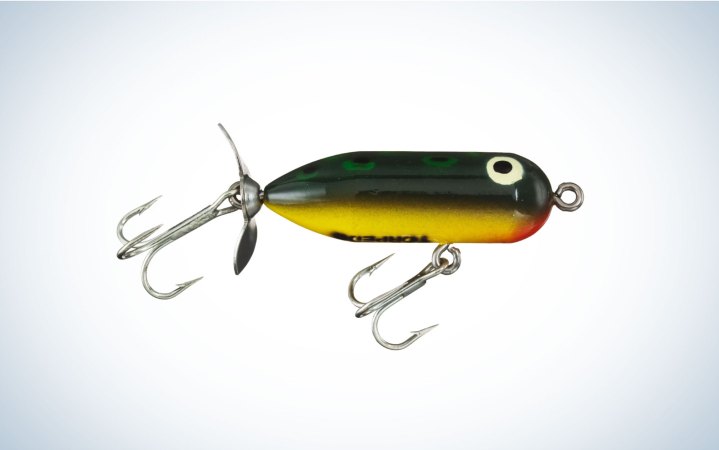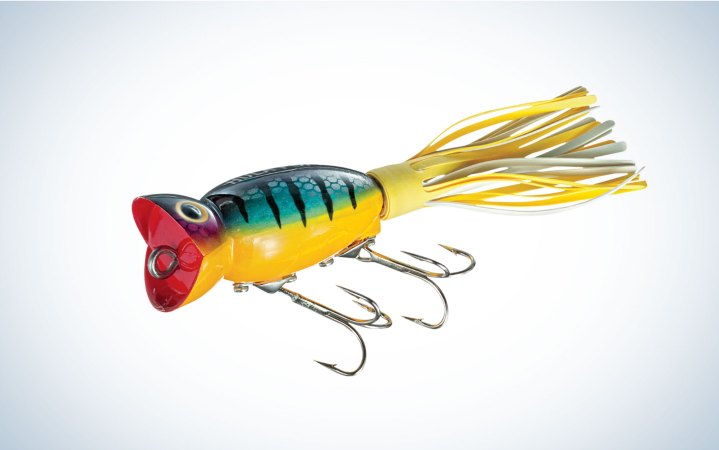Lake Erie, Dale Hollow Lake, and the St. Lawrence River are just a few locations in the U.S. that grow giant smallmouth. These are iconic places to fish, but to truly be effective on those waters, you need a boat, good electronics, and a mountain of tackle. One of the things I love most about smallmouth fishing is that you can find them in quiet, country streams. In fact, my favorite way to target them is with topwater lures while wet wading in the summer.
Smallie-rich streams can be found all over the country, and with one rod, minimal tackle, and a pair of old sneakers, you’re in the game. The gear might be simple, but it’s critical to understand how and when you should approach these small waters. So, if you want to catch smallmouth bass in rivers this summer, follow these topwater tactics.
Choose Your Attack Time
The summer sun is your enemy for two reasons. Most critically, when streams get lower and clearer, sunlight illuminates the water, thereby making it easier for predators like hawks and herons to spot and attack fish. No species of fish likes to feel exposed so, when that scorching orb lights up the stream by late morning, smallmouths are going to tuck into submerged cover, beneath undercut banks, or simply glue themselves to the bottom where it’s harder to be seen. The bottom line is that they won’t be as willing to move, least of all for a topwater lure that requires them to shoot up to the surface.
The sun also heats the air, which means people will flock to the river with water shoes and inner tubes and kayaks. The commotion created by summer swimmers certainly doesn’t help the fishing.
My ideal day for a topwater smallmouth hunt would be overcast and perhaps a little drizzly. Of course we can’t always bank on those conditions, but what you can do is be on the stream at first light. In summer, I’ve found that early morning is the best time to trick smallies into rising because the water is the coolest it’ll be all day, the light is low, and the fish have had all night to reset. While evening fishing can be good, too, the water temperature will remain hot and the ruckus from tubers and swimmers can keep the fish lockjawed well into the night.
Read Next: How to Catch Smallmouth Bass
Choose Your Top Weapon
One of the most fun aspects of wet wading a stream for smallmouths is that you can be effective with much lighter tackle than is needed on a larger river or lake. Though the average size of the fish in more intimate moving waters will vary, it’s common to catch smaller bass but still find a couple toads in the mix.
I wade with a 6-foot, 6-inch spinning rod and a reel loaded with 10-pound braid. For a leader, I rarely use anything heavier than 6-pound fluorocarbon. Not only does scaling down your tackle make your presentations more natural, but it also allows you to send smaller topwater lures farther and with better accuracy. The four topwaters I’m never without on a wade are:
2.5-Inch Rebel Pop-R
See It
This classic topwater can be chugged aggressively in faster runs and riffles or delicately finessed in softer water. Its signature white tail hangs just below the surface mimicking an aquatic insect.
3-Inch Heddon Zara Spook Puppy

See It
A micro cousin of the classic Zara Spook, this little walking bait shines in slower sections of a stream where bass can hear its “clack” and home in on its distinctive wake.
1.5-Inch Heddon Torpedo

See It
This prop bait might be itty-bitty, but it packs a mean punch. In the early morning hours, the high-pitched “zip” of its propeller churning the surface is irresistible.
1.75-Inch Arbogast Hula Popper

See It
The flat rubber skirt of this lure is what makes it stand out. Mimicking a bug more than a baitfish, slight pops and twitches convince bass they’re looking at a juicy beetle or cicada.
Read Next: Best Smallmouth Bass Lures
Choose Your Target
A mistake I see many people make when approaching a small stream for bass is racing to the deepest holes. Sure, these locations often hold bigger fish and lots of fish, but they’re not necessarily the best places for good topwater fishing. Don’t forget that smallmouth move around a lot when they hunt, and prey like minnows feel safer in shallower water. Their food knows where not to be, so you’ll often have better success in stretches with moderate depth and minimal flow, because the bass won’t have to exert as much energy or move up and down in the water column as far while grabbing a meal.
Over the years I’ve found that stretches that might not look “fishy” at all are some of the most productive. As an example, if you find one or two large rocks or a fallen tree in what is otherwise a flat, featureless stretch of stream, get a topwater over or around it. Likewise, I catch more quality stream bass in the softer, shallower tail-out sections of a riffle than in the deeper, faster top section.
Don’t assume that the fish are tucked up in ambush in the early morning hours. In fact, you should assume they’re roving around in open water. Even if I have a prime destination in mind, I never stop throwing my lure as I wade to it. Sometimes my heaviest fish of the day come from areas where you’d never think a bigger, smarter fish would be. Keep in mind, though, that on bright days these rovers will likely retreat to harder-to-reach-cover when the sun gets too high or when the “tube hatch” gets overwhelming.
Read the full article here




